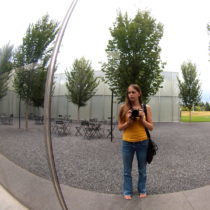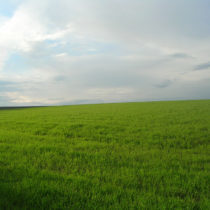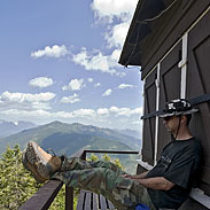Landscape Architecture for Landscape Architects › Forums › GENERAL DISCUSSION › Nerds in the landscape (How does lar respond to a tech culture?)
- This topic has 1 reply, 12 voices, and was last updated 13 years, 4 months ago by
 Andrew Garulay, RLA.
Andrew Garulay, RLA.
-
AuthorPosts
-
August 14, 2012 at 8:39 pm #156827
 Emily StruthersParticipant
Emily StruthersParticipantyes yes yes. I love the idea of a revisit to The Social Life of Small Urban Spaces. In the Late 70s/ early 80s people go out to public places to read books and talk to each other and drink coffee. That part hasn’t changed, but add on to that cell phone conversations, laptop use, texting, gps use, e-readers, tablet devices, and cameras in every pocket. Now we need seating that lets you talk on the phone and not piss off the people who are on their laptops. Laptops need adequate shade so the screen is easily readable. It’d be nice if the place had something so identifiable about it that an instagram photo that pops up on a facebook feed could help to promote the public space. Maybe we could tie in more information about the place itself, mark out coordinates to get the geo-nerds excited and educate people about these fascinating systems. You can scan a bar code that’s placed on anything and be directed to internet based information. Slap one of those somewhere and read about the entire history of the space you are standing in. And wayfinding: check out this project (by a fellow NC State grad) http://www.kickstarter.com/projects/cityfabric/walk-your-city.
A better link between technology and community would provide a way for people to get involved without going out of their way, it could educate, build support, provide an open forum, connect users to designers and policy makers.
I think the opportunities here are endless, we just have to start thinking about them as part of the process. Even if it isn’t traditional. Even if our client doesn’t come out and say, hey, “I want this place to be tech-friendly”. It’s our job as designers to be forward thinking and innovative. Maybe it’s exactly what they want, they just hadn’t imagined it as possible.
Matt, I followed (and applauded) you up to the prospect vs. refuge reference. Can you explain more what your thinking was with that part?
August 14, 2012 at 8:48 pm #156826 Emily StruthersParticipant
Emily StruthersParticipantA digital wall, that’s cool! Maybe something like that would become a focal feature of a modern park. Long ago, fountains used in gardens were a showcase of technology. Today, we all get more-or-less how a pump works. What could be the next ‘fountain’?
August 14, 2012 at 9:23 pm #156825 MLN84ParticipantAugust 14, 2012 at 11:48 pm #156824
MLN84ParticipantAugust 14, 2012 at 11:48 pm #156824 landplannerParticipant
landplannerParticipantI have read this thread of discussion and I don’t think I am missing anything here. Andrew Garulay sums up my viewpoint better than I could. I am really striving to find any direct relevance here as to what is going on in the “real” world. Nerd, geek or whatever you want to label the outcasts and outliers of our profession, what is really is your point here ? I have struggled to find one that will benefit anyone reading this with anything credible and meaningful they can use….. Come up with that or cancel this foam and froth discussion… it is all bubbles …..
August 15, 2012 at 2:47 am #156823 idaParticipant
idaParticipantI think technology would be more useful in large parks more than plazas. For Central Park I believe there is an app that plays geo-coded audio recordings as you visit certain areas, and when you take a pic of a tree within the park with your phone, the app identifies that tree. I’ve been to Central Park many times, but I think this app/technological experience offers something new and makes me want to visit the place again.
At first I was thinking of this topic in practical terms, but now I see your point Emily, there is potential and more creative opportunities if we think of how technology has changed people and how they use technology to interact with their surroundings.
It is interesting that car manufacturers are starting to install technology that syncs with your phone. The home is now connected wirelessly via the Nest, a thermostat that has an app! Will our parks/plazas have this level of interaction now? It’s exciting to think about this new experience. It also makes me wonder if we LAs will have to learn how to program an app in addition to doing CAD work, lol!
August 15, 2012 at 2:50 am #156822 mauiBobParticipant
mauiBobParticipantNerd = Landscape architect = No future. LA is dead.
“When public spaces are being replaced with computer chairs how will landscape architecture step in?” Huh? You’ve got too much time on your hands, Emily. Maybe you should be working for the government as a social worker.
August 15, 2012 at 11:15 am #156821 Andrew Garulay, RLAParticipant
Andrew Garulay, RLAParticipantLike it or not, it lives without you.
August 15, 2012 at 1:43 pm #156820 Rob HalpernParticipant
Rob HalpernParticipantIt all rather depends, for me, on why we are designing and for whom. (Which is, after all, the most important lesson we designers ever learn).
So, some possible rationales for landscape design with nerds in mind:
1. Because we need work and if this is what is popular then by all means. It doesn’t have to make sense
2. We want to be noticed as The Next Great Thing so designing a landscape that optimizes laptop use will get an article published on someone’s blog surely
3. We want to create places that foster human interaction or solitude…well do more free wifi stations help that? How?
4. We want to address the link between humans and Nature, creating places where humans can benefit from and value Nature. Do free apps that assign names to trees assist in that? Do apps support our link to Nature or do they not?
5. Instagram is hot now, so making the landscape read on Instagram is the Future. Ah where are the AOL landscapes of yesteryear?
6. We want to follow the pack. The Pack has gadgets. They must be right.
7. We want to lead the Pack. And they have gadgets. Now, what shall we have these gadgets in the landscape do????? Where shall we lead them to? A charging station?
8. We need a topic for a thesis. My iPhone is a good topic. Hi, iPhone..what ya thinkin’?
9. We are committed to sustainability. Gadget use is…oh right
OK, I have a problem with this. It is not enough that people have gadgets to get us to re-invent landscapes. Outdoor spaces are too damn important and increasingly rare to be pushed into re-invention by whatever people are currently carrying in their pockets. Nerds do indeed pose some serious questions to our landscapes (as the new born middle-class of the last half of the 19th century posed to landscapes of their day and as the drug users of the later decades of the 20th century posed then). But asking those questions ought to be a deeper journey than a knee jerk “So how can we accommodate their love of gadgets?”
(I’ll add that I just completed work for a Visitor Center in a botanic garden. I felt that data technology was key to what we wanted to accomplish. Seems to be the right match of content and delivery)
August 15, 2012 at 2:21 pm #156819 Rob HalpernParticipant
Rob HalpernParticipantIf “nerds” are preferring to sit inside enjoying digital experiences, then what foolishness is it to think that if only the outdoors were more accommodating to them then they would stream outside?
They are not inside because LA has neglected their digital needs. Although perhaps they are inside because LA has neglected their needs for real experience?
This thread is asking the wrong questions and not examining the assumptions behind them, IMO
August 15, 2012 at 6:32 pm #156818 Emily StruthersParticipant
Emily StruthersParticipantSorry you haven’t figured out my point. This article in today’s ASLA’s The Dirt http://dirt.asla.org/2012/08/14/a-natural-wi-fi-station-in-paris/ an obvious embodiment of the possibilities. The article points out that in the 19th century the flâneur had particular needs, and today’s flâneur has a new set of needs. It’s ok if you keep designing for past centuries, but I’d like to move forward.
August 15, 2012 at 6:40 pm #156817 Emily StruthersParticipant
Emily StruthersParticipantI’d like to reply to you as well with a link from today’s ASLA’s The Dirt http://dirt.asla.org/2012/08/14/a-natural-wi-fi-station-in-paris/ . The most interesting point of the article is that “Five minutes after it was set up, people were using the map, sitting and making calls.” Proof that there is a need and a desire for such accommodations that has for the most part gone unacknowledged.
August 15, 2012 at 6:46 pm #156816 Emily StruthersParticipant
Emily StruthersParticipantI know the theory, but now I see what your thought process was with the modernization bit there. Gotcha. I’d say it makes at least some sense. I should revisit the whole theory anyways and since, as mauiBob has so kindly pointed out, I have too much time, I’ll look for it in the library, thanks! go wolfpack.
August 15, 2012 at 7:04 pm #156815 Chris WhittedParticipant
Chris WhittedParticipantFor those of you who don’t get ASLA’s DIRT emailed to you, this appeared in my inbox today and I have to say exemplifies the first thought I had when this thread originally popped up.
http://dirt.asla.org/2012/08/14/a-natural-wi-fi-station-in-paris/
I’d also like to offer an observation or two regarding National Parks (and other goverment managed ‘natural’ recreation facilities). I’m fortunate enough to have one in my back yard (RMNP) and several others in close enough proximity that I get to visit once every year or three, and I’ve seen some dramatic shifts in the users and facilities. A lot of visitor centers are now full of touchscreen monitors for information and exhibits. Some offer audio tours in a variety of formats. Some even have cell phone tours, where you dial or text a certain number when you’re at a particular point. Wifi is provided in campgrounds. You can’t tell me that the park system at least isn’t responding to ‘nerd culture’. Except it’s not nerds, it’s everyone – technology has become so ubiquitous in our society that anyone, from any sub-culture, economic class, or geographic region could be in the group you’re referring to.
I can’t go to a park without running into someone using a cell phone, GPS, digital camera, or any number of other devices. Which is not to say I’m not among them – my camera is digital and I carry a GPS, though more for tracking than navigating. But I still find it to be too much. I’m in that (apparent) minority that goes to those types of places to get away from that stuff. I was severely disappointed when Wifi started appearing in campgrounds (RVs with sat dishes weren’t enough?). I can’t count the number of times I’ve had to give assistance to someone or at least heard them lament about a failure of technology they were relying on for their trip. Or seen a kid busy with a portable game next to a waterfall or on top of a mountain.
But that is both diverging from and at the core of your original question (Emily) which I would now turn back to you. What could or should landscape architecture do to address or adapt to these kinds of people? If there is a compelling park design nearby, with tons of physical and tactile activities that are well thought-out and fun and available, yet you still can’t get that kid out from in front of that gaming screen, what have you missed in your design of that park? Providing communications access or even seats and screens isn’t the answer – then you’ve just changed where they’re doing, not what. Do you have to build alternate reality games into every design to get them to interact with it? How does (can) social media have anything to do with the landscape? In all of your posts in this thread I have yet to see any idea beyond providing access points to the communication network within designs.
Addendum: and apparently in the time it took to type this you already found and posted the link. But this is exactly my point – what purpose did landscape architecture serve other than to camouflage, dress up, or make more usable by providing seating and shade what is nothing more than a computer terminal and access point?
August 15, 2012 at 7:04 pm #156814 Emily StruthersParticipant
Emily StruthersParticipantOh sorry, did my curiosity about the changing needs of people get in the way of your copy/paste design?
August 15, 2012 at 7:14 pm #156813 Tosh KParticipant
Tosh KParticipantSome cities do this with trees ( for maintenance, but also leads you to who/when it was planted and the ability to report damage), bldgs, pretty much anything a whole lot of ugly-in-my-opinion barcoding; smaller than billboards, but still disappointing.
Why discourage awareness with so much instant access? I’m going to side with Louv on this one.
-
AuthorPosts
- You must be logged in to reply to this topic.


